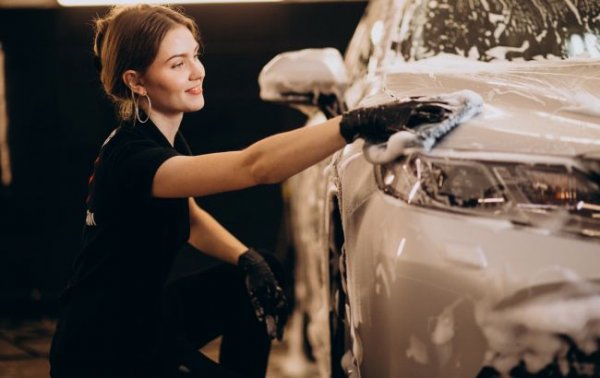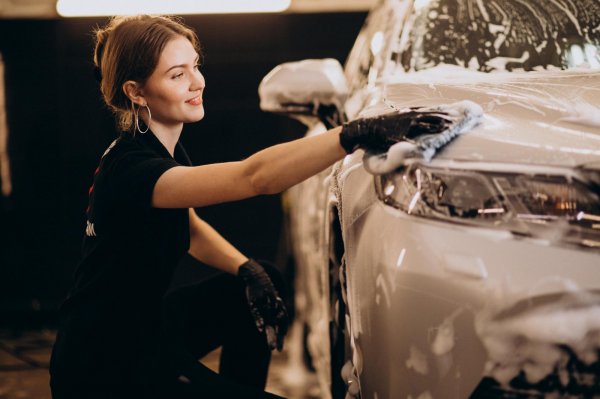
Photo: car wash without water (freepik.com) Author: Konstantin Shirokun
At first glance, washing without water is an unexpected claim, but it is really possible. There are at least two ways to wash a car without water.
Read about how to wash your car with a minimum of funds in the RBC-Ukraine article.
First, let's remember that washing a car outside a car wash is not very good for several reasons: it is uncultured, it is harmful to the paint, and finally, it is illegal. However, we hope that the technologies proposed here are classified not so much as washing, but as cleaning.
It is important to know that washing a car with a small amount of water is harmful to the paintwork (LKP), because it damages it. Microparticles of dirt that should be carried away by water, are retained in the sponge during dry washing and leave scratches on the LKP. It is not without reason that cars that are constantly washed in garages have a matte, non-shiny coating, since a dense network of micro-scratches is formed on the paint (varnish). In general, it is up to you to decide.

Method 1. Car chemicals “Dry wash”
A product with this name can be found in car chemistry departments, and in different versions. Sometimes it is a set of a bottle and several napkins, sometimes just a bottle with a spray. The most important thing is the bottle itself, it contains liquid shampoo with the addition of a drying wax. The wax is the same as that called “hot wax” that can be ordered at a car wash at the end of the process. And the napkins in the set will not be simple, but so-called microfiber, they absorb moisture in a special way and retain dirt.
Dry cleaning with the same preparation is carried out simply:
A certain part of the car's surface is sprayed with a spray bottle and left for half a minute so that the dirt becomes soft and its particles are wrapped in shampoo;
The cleaner wipes the surface with a napkin. Thanks to the soap solution, dirt particles will not scratch the varnish too much;
When repeating irrigation and wiping in separate areas, the owner should turn the napkin over from time to time so that the dirt collected in it does not get smeared over the paintwork;
In the end, the surface will not be perfectly clean and dry – moisture and wax will remain on it. This wax should be rubbed off with the second napkin from the set, which should wait its turn in a clean form;
The owner can step back a few steps and admire the work done. If the layer of dirt was not thick, the result is usually good.
Method 2. Soap solution
The above-mentioned factory-made “dry wash” preparation can be reproduced at home if desired. It is not a problem at all to make a liquid shampoo solution so that it can be sprayed through a sprayer – for example, for a standard plastic bottle (sold in hardware stores).
The first technological operation of washing according to this method will be the same as in the case of the factory solution. The shampoo solution will work the same way as the branded product: the dirt on the body will be soaked and will surround every particle of dirt with a soap solution. And it will need to be collected from the body in the same way with a microfiber cloth. Which can be found either in the same household department of the store or in your own kitchen.
The only difference will be at the end of the wash, because the improvised solution will not leave a drying wax on the body. Therefore, it will be more difficult to wipe off moisture from the paint. This means that you will need more napkins, for which, by the way, soft paper towels can be suitable in this case.

In brief
Based on the experience of car make-up professionals, the biggest difference between a dry wash and a full-fledged wet wash is in the streaks on the paint that remain on the car after it has completely dried. These traces of dried water can be ignored, or they can be wiped off with a soft – and most importantly, clean – cloth made of the same microfiber, flannel or even suede. And these cloths can be damp.
In preparing this article, materials from Autobild and Autocentre were used .
Let us recall that RBC-Ukraine recently reported why pedestrians are not always right.
